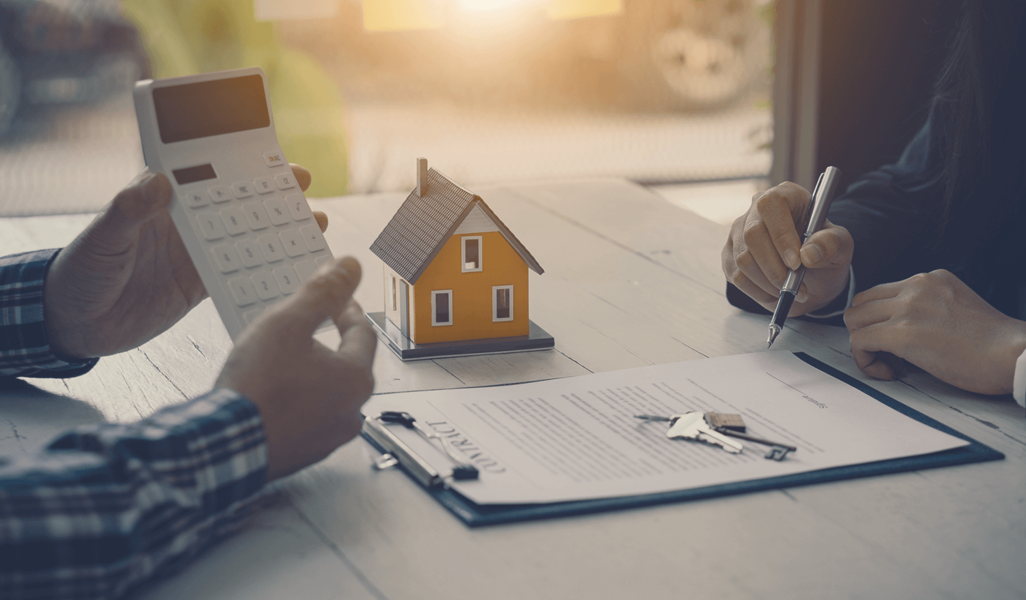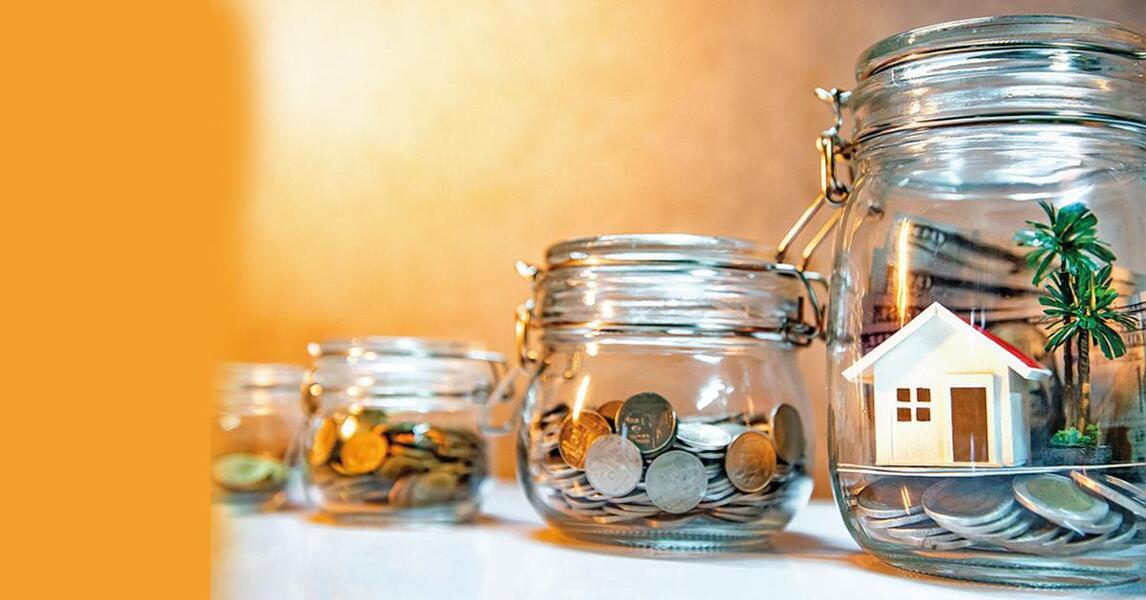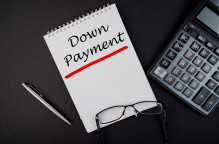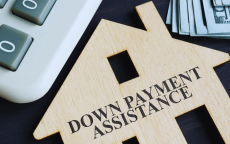What Is A Down Payment & How Much Is Required
The term Down Payment refers to the initial money buyers pay upfront when purchasing high-priced goods. Read this post to learn more about what is a down payment.
Planning to take on a mortgage to finance your house purchase? Don't forget to factor in the down payment for your mortgage. This upfront payment marks the beginning of your journey toward homeownership, serving as a demonstration of your financial readiness and commitment. Continue reading to delve deeper into “what is a down payment," how it works, how to choose the right down payment size, and more.
What Is A Down Payment?
To define, a down payment is the initial payment made in a financial transaction, commonly when buying a home or car. The down payment represents a portion or percentage (%) of the total purchase price and is paid upfront, with the remainder typically financed through a loan or mortgage.
The down payment amount determines the size of your loan. For example, if you put down a 15% down payment on a $400,000 house, or $60,000, you will need financing for the remaining 85% of the total price, or $340,000. However, if you make a 5% down payment, you’ll need to secure financing for the remaining 95% of the purchase price, which is $380,000. In addition, the down payment amount can also affect the loan terms, interest rates, overall interest paid, and monthly payments.
How A Down Payment Works
In real estate, a down payment is a crucial part of the home-buying process. It demonstrates your financial commitment to the purchase, making lenders view you as having a lower risk of defaulting on the loan.
If required, you may need to put down a down payment of 3% to 20% of the house's purchase price, based on your savings and the type of mortgage you are obtaining. Please note that if your down payment is less than 20%, you’ll likely need to buy Private Mortgage Insurance (PMI), which may cost about 0.5 percent of the mortgage on average, until you have built up at least 20% equity in your property.
Homebuyers make their mortgage down payment at closing. This upfront payment will then be placed into an escrow account managed by a settlement officer or real estate attorney. Following the completion of the deal, this third party will distribute the funds to the home seller.
Notably, there exists a trade-off between the credit rating and down payment amount, as a bigger down payment can partially offset a lower credit score, and vice versa, a better credit score can offset a smaller down payment.
Down Payment Example
The table below shows how different down payment sums impact the overall monthly payment for a 30-year fixed-rate mortgage with a 6.75 percent interest rate for a $400,000 home. The data is collected using our free mortgage calculator and Freddie Mac’s PMI calculator.
Home price | Down payment (%) | Down payment ($) | Monthly principal and interest | Monthly Private Mortgage Insurance (PMI) | Total monthly payment |
$400,000 | 5% | $20,000 | $2,464.67 | $365 | $2,829.67 |
$400,000 | 10% | $40,000 | $2,334.95 | $234 | $2,568.95 |
$400,000 | 15% | $60,000 | $2,205.23 | $95 | $2,300.23 |
$400,000 | 20% | $80,000 | $2,075.51 | $0 | $2,075.51 |
$400,000 | 22% | $92,000 | $1,997.68 | $0 | $1,997.68 |
From the table above, it is evident that a higher initial payment leads to reduced monthly installments, and vice versa. However, it’s worth noting that the above example doesn’t consider other factors like property taxes, homeowner's insurance, potential interest rate savings that may come with a larger down payment, and more.
How to Choose Your Best Down Payment Amount
Both bigger and smaller down payments have their benefits and disadvantages. Here are the typical pros and cons of each:
Pros and Cons of a Bigger Down Payment
Pros:
- Smaller total monthly payments. Bigger down payments mean you borrow less from the lenders, leading to smaller monthly mortgage payments. In the above example, opting for the 20 percent down instead of the 5 percent down results in a mortgage payment reduction of approximately $389 (not factoring in the PMI).
- Ability to avoid mortgage insurance. You can skip the mortgage insurance if your down payment is 20% or more on a conventional or FHA loan.
- Potentially better interest rates. Lenders prefer larger down payments, so paying a higher percentage of the total purchase price or borrowing less from them may make you eligible for lower interest rates. For example, a 21% down payment can qualify you for a better interest rate compared to that offered with a 5% down payment.
- Lower lifetime interest paid. Smaller monthly payments and potentially lower interest rates can lead to substantial savings on interest expenses in the long run.
Cons:
- Require more time to save. It’s challenging to save for a higher upfront cost (such as a 20% down payment), especially for first-time buyers. A bigger down payment might take more time to save this amount, delaying your homeownership.
- Opportunity cost. Potential homebuyers saving for a bigger down payment may miss the chance to benefit from price appreciation and start building equity earlier.
- Risking financial strain. Draining most of your savings for a larger down payment can leave you with limited savings or even put you in a precarious situation as a new homeowner, particularly when emergency expenses arise or home repairs are needed.

Pros and Cons of a Smaller Down Payment
Pros:
- Lower upfront costs and the opportunity to purchase a home sooner. Saving up a 20% down payment is challenging for numerous home buyers. However, a smaller down payment like 3% or 5% seems much easier for those with limited savings to buy their dream house sooner, taking advantage of favorable market conditions or locking in a lower purchase price.
- Smaller down payments don’t drain your savings. Choosing a smaller initial allows you to keep more of your savings for unexpected situations or other investment opportunities.
- Investment Opportunities. The money saved from a smaller down payment may be invested elsewhere, potentially yielding higher returns.
Cons:
- Higher monthly mortgage payments. The smaller the down payment, the larger the loan amount you'll need to borrow. This translates to higher monthly mortgage payments that can considerably affect your budget
- Likely having to pay for Private Mortgage Insurance (PMI). Most lenders often require PMI for loans with down payment amounts of less than 20%. As a result, this adds cost to the monthly mortgage payment.
- Increased long-term costs. A smaller down payment means a larger loan amount, leading to higher interest charges over the life of the loan.
- Limited loan options. Qualifying for a mortgage with a smaller down payment can be more challenging. In addition, not all lenders provide the option of loans with a low down payment.
- Greater risk of default. You tend to be more vulnerable to financial hardship with a smaller upfront payment. If property values decline, you could end up "underwater" on your mortgage, owing more than your home's worth. This, of course, can make it harder to refinance or sell the property when needed.
In short, as you can see, both bigger and smaller down payments offer benefits and downsides. So, to decide the best down payment amount, you should thoroughly consider many different factors, including personal savings, future financial goals, your monthly budget, loan costs and interest rates, market conditions, and more. You should also consult with a mortgage advisor to figure out the best down payment amount for your specific circumstances.
 Tips to Save For A Down Payment for Your New House
Tips to Save For A Down Payment for Your New House
Saving for a mortgage down payment may appear so challenging, particularly for first-time buyers and those with limited savings. But don’t worry, it’s achievable through strategic planning and discipline. Here are a few practical tips that may help you strategically save for a down payment:
Set a savings goal: Start by setting a clear target for the down payment amount and the timeframe you wish to achieve it within.
Budget: Create a budget that prioritizes saving and stick to it by cutting back on non-essential expenses. Without a doubt, budgeting allows prospective home buyers to direct their money towards saving goals. So, check out your monthly income and expenses then determine areas where you should cut back on spending, even temporarily. Make the most of any extra dollars by directing them into your savings account.
Do not wait for a windfall: Begin saving for a mortgage down payment as soon as you can, even if you don't have a specific timeline for buying a home. Don't wait for unexpected money to come your way.
Increase your income: Explore potential opportunities to enhance your earnings, like taking on freelance work or a part-time job, and consider allocating the extra income directly to the down payment fund.
Be strategic about where you’ll keep your savings: Consider where you should keep your money so that it can provide you with a return, such as a high-yield savings account or CDs (certificates of deposit). However, make sure that your choice aligns with your timeline; if you plan to purchase a home soon, avoid long-term CDs that may restrict access to your funds, for example.
Research financial assistance programs: Look into potential grants, loans, or assistance programs that could help supplement your savings for the mortgage down payment.
FAQs about Down Payments
How Much Down Payment For A House?
The down payment amount for a house and the minimum down payment for house first-time buyer vary depending on factors like the type of mortgage, lender requirements, and your financial situation. Typically, conventional loans may require a down payment of 3% to 20% of the home's total purchase price, while FHA loans often have a down payment requirement of at least 3.5%. However, some programs, like VA loans for veterans or USDA loans for rural homebuyers, offer no down payment options.
How Much Down Payment for a Car?
The down payment for a car also depends on a wide range of factors, such as the vehicle's price, buyer’s budget, credit score, and desired loan terms. Generally, a down payment ranging from 10% to 20% of the car's purchase price is common to secure favorable loan terms and reduce monthly payments.
If you wonder how to calculate down payment on a car, you can go to our free car loan calculator, enter inputs into the corresponding fields, and get results based on your provided numbers. You can type in different down payment amounts and see how much is optimal for your financial situation.
What Is A Down Payment Calculator?
A down payment calculator is designed to help prospective homebuyers estimate how much money they'll need to put down when purchasing a home. By inputting details such as the home price, interest rate, loan term, and desired down payment percentage, the calculator helps estimate the down payment amount required.
Conclusion
Understanding “what is a down payment” and how it works is crucial for anyone considering buying a home (or expensive goods, such as a car). Down payment demonstrates the buyer's financial responsibility and commitment to homeownership while also impacting the overall loan cost of the home and mortgage terms. Whether opting for a larger or smaller down payment, weighing the pros and cons and considering personal financial circumstances is essential. By using tools such as mortgage calculators or loan calculators and applying appropriate saving tips, prospective homebuyers can navigate the down payment process with confidence and make informed decisions on the journey toward homeownership.


